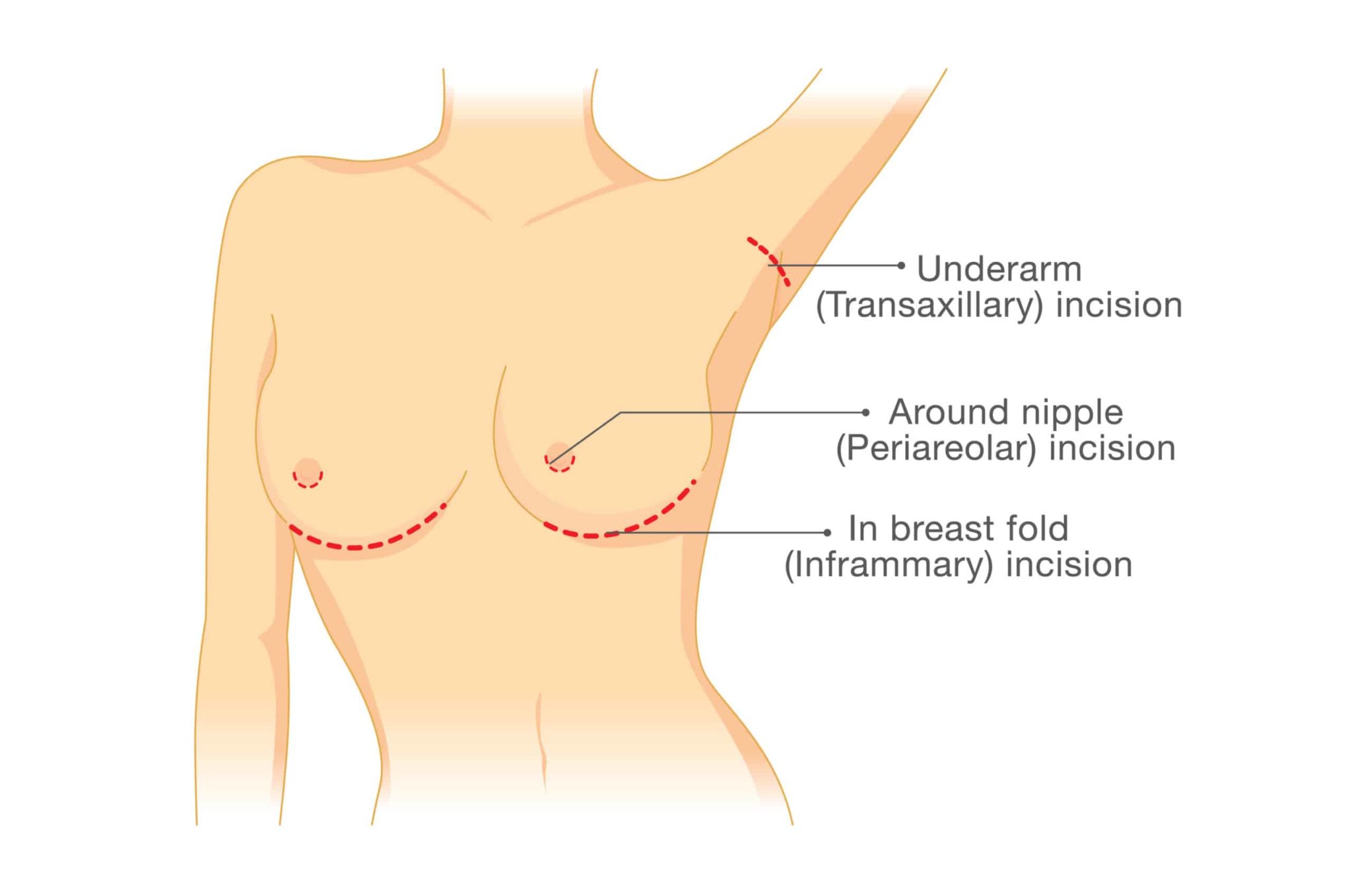Medically reviewed by T K Sankar, Consultant Plastic and Reconstructive Surgeon
If you’re considering having breast implants, you’ll understandably have questions about how the scars will look. It’s a common area of concern, so we’ve produced a brief guide to the different types of incisions and how to reduce the chance of highly visible scars.
We often get asked ‘how long do breast implant scars take to heal?’ The answer is that while they will close up within a few weeks, they can take up to two years to fade. If you google ‘breast implants scars before and after’ you will see many variations of scars post-surgery, and how the vast majority of them will fade with time.
As breast enlargements and breast uplifts with implants both require surgical incisions to be made, scarring will inevitably occur. But because these are both planned and controlled procedures undertaken by experienced plastic surgeons, any scarring should be minimal.
Over the years, surgeons have trialled different ways of inserting breast implants and ‘lifting’ the breast—resulting in various incision locations. These options differ depending on the size and shape of your natural breast, your nipple size and the type of implant you would like.
Insertion techniques also take into account whether the procedure is a first-time implant (or a replacement) and if you would like to breastfeed. Your plastic surgeon should discuss all of the above, along with your general health. During your consultation, you may also ask if there are any available breast implant scars photos to guide your expectations.

There are three breast augmentation incision types. Each has its advantages and disadvantages and results in different breast implant scar locations.
The most common incision occurs in the inframammary fold or breast crease. The inframammary incision is located where the breast meets the breast wall and is popular for obvious reasons.
In addition to being covered by the breast in most cases, it also allows surgeons greater control and precision during breast implant placement and can be reused if they need to be removed or replaced.
As this incision doesn’t involve the nipple or milk duct area, it shouldn’t affect nipple sensitivity or the ability to breastfeed.
The ‘areolar’ or ‘periareolar’ approaches refer to incisions around the nipple. The resulting breast implant nipple scar can be all the way around (areolar) or just a semi-circle around the lower half.
While this usually results in a small incision that blends in well—if for some reason it doesn’t heal properly, it's located in a more visible area than the breast crease.
And although it allows the surgeon to be able to place the implant precisely and easily, it’s also not suitable for women with small nipples and can affect the nerves in the area causing decreased nipple sensation.
Like the inframammary incision, a breast implant can be removed and replaced using the same opening. However, this is not a suitable procedure for women who may wish to breastfeed in future. This is because it involves cutting the milk ducts, which can also make this incision type more prone to infection.
The less commonly known transaxillary incision is placed in the crease of the armpit. This technique is not a popular one, and is only used on selected patients by selected surgeons. This is popular with people who don’t want any scars on the breast, but can be visible when wearing sleeveless tops.
The transaxillary approach may or may not affect nipple sensation, but it shouldn’t affect the ability to breastfeed. However, it’s less easy for the surgeon to be precise and is mostly suitable for saline implants.
It can cause decreased sensation around the scar and issues with hair removal in the area. This transaxillary incision is not suitable for women who have previously had implants, or would like a breast lift with implants.
Please note - If you’re considering any breast surgery involving the removal or ‘lifting’ of breast skin and breast tissue, it will result in different incisions to those above. Your surgeon can give you a thorough overview of breast uplift and implant scars, as well as those caused by breast reductions.
Surgeon skill, as well as your skin type and age, will play a huge role in the final appearance of your scars after breast implant surgery. It’s therefore important to only approach highly recommended, qualified and experienced professionals when considering plastic surgery.
Also pay attention to how any of your scars have healed in the past when thinking about the results you can expect. Breast implant scar removal involves further, costly procedures that can result in more scarring. So it’s worth doing the following to improve your chances of faint, fine, smooth breast implant scars:
At The Harley Medical Group our patients’ safety and satisfaction is our number one priority. If you are considering breast surgery, whether augmentation, implant removal or breast reduction, our expert plastic surgeons can advise which route is more likely to deliver the results you want.